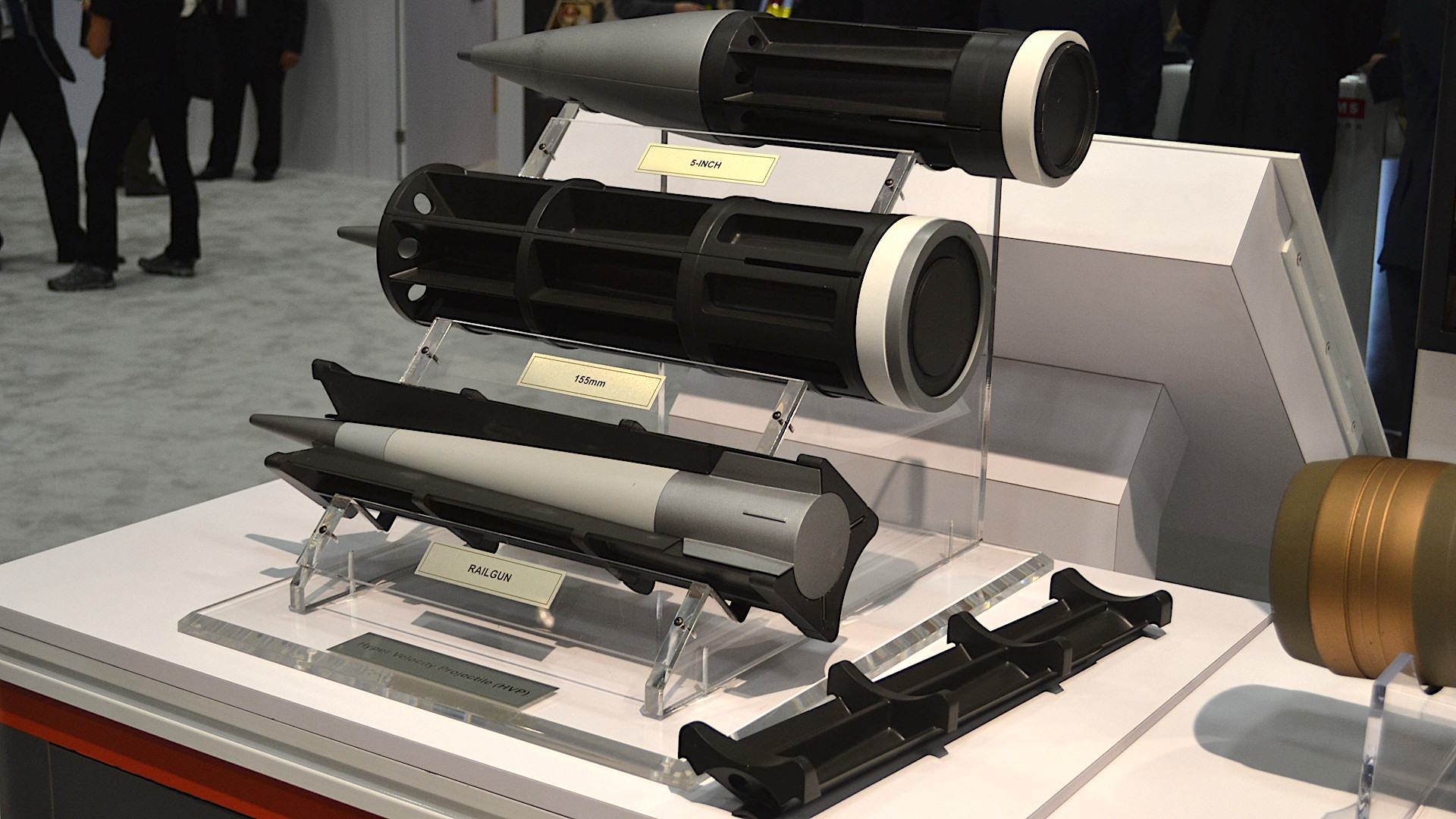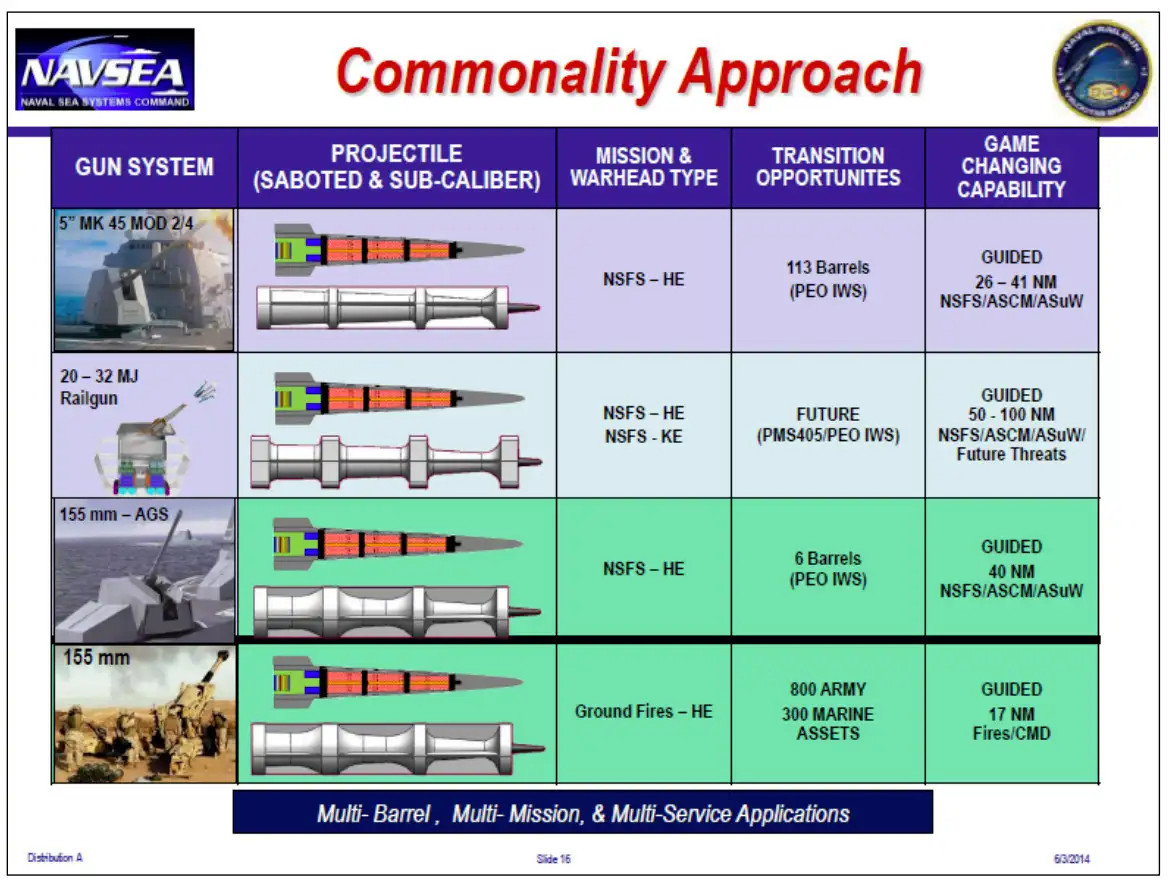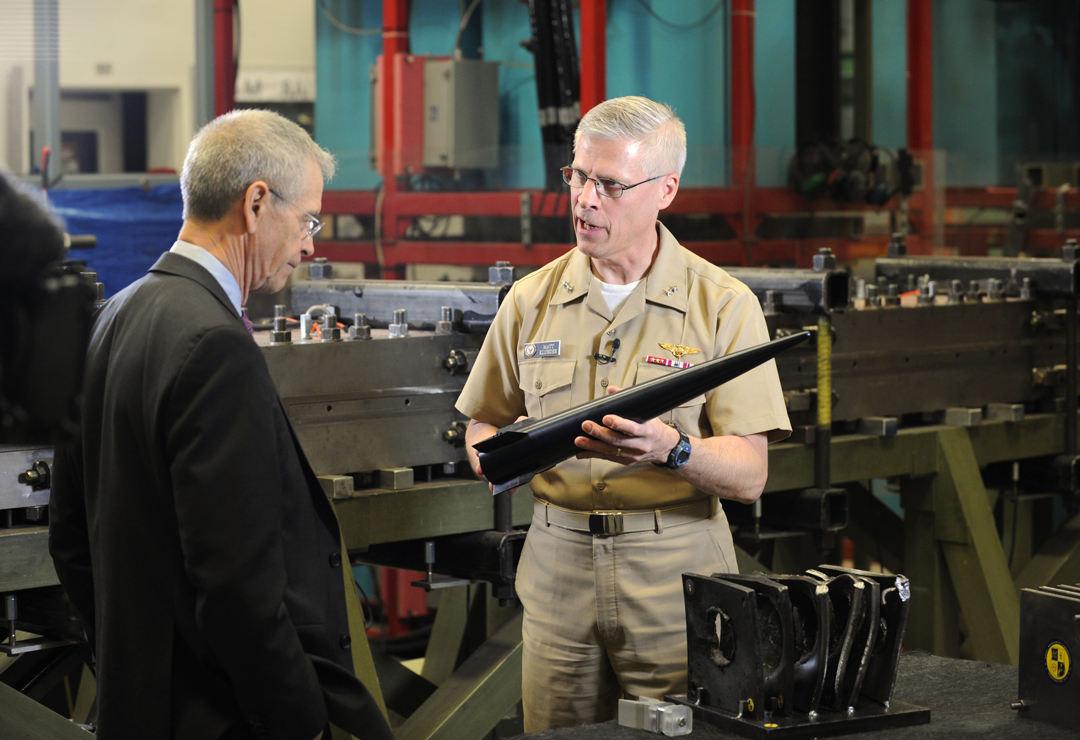Earlier this week, The War Zone was first to report the U.S. Navy’s program to develop an electromagnetic railgun appeared to be all but formally canceled in its proposed budget for the 2022 Fiscal Year. Now, it has also emerged from that service’s budget request that it plans to stop working on the specialized, high-speed, multi-purpose projectiles for that weapon, versions of which were also being developed for use in other more conventional guns, at least for the time being.
Military.com
was first to spot a section in the Fiscal Year 2022 budget documents outlining the Navy’s decision to stop the development of the Gun-Launched Guided Projectile (GLGP) program, a project previously known as the Hyper-Velocity Projectile (HVP). By at least 2014, work on this family of projectiles had been spiraled off of the larger railgun effort, which had begun in 2005.

“[The Navy] terminated the Gun-Launched Guided Projectile Research and Development effort,” one budget document says. “Potential reinvestment in the program will be reevaluated after an ongoing Strategic Capabilities Office demonstration effort in Terminal Defense Analysis is complete.”
“The Gun Launched Guided Projectile program is cancelled in FY2022 due to cost and is concluded in FY2021,” another budget document adds. The Navy expects to free up approximately $5.9 million by ending this project.


The original dart-shaped HVP/GLGP design for use in the electromagnetic railgun was a kinetic round intended to destroy targets through the sheer force of hitting them at extremely high speeds. The Office of Naval Research (ONR) had said in the past that it had demonstrated the ability of a railgun to fire one of these projectiles at a speed of approximately 4,500 miles per hour, or around six times the speed of sound.

Another HVP/GLGP variant with a high-explosive warhead was subsequently developed for use in railguns. This version was also intended to be fired, at speeds up to Mach 3, from more traditional guns, such as 5-inch naval guns, 155mm howitzers, and the 155mm Advanced Gun System (AGS) guns found on the Navy’s Zumwalt class stealth destroyers.

At Mach 3, and together with a high-explosive warhead, the round was still expected to be useful against a wide variety of targets, ranging from ships and boats to targets ashore and even low-flying aircraft and cruise missiles. As the GLGP program name makes clear, the rounds were also guided, though it’s not entirely clear exactly what the means were for the projectiles to zero in on their targets. Whatever the guidance package was, it was designed to be able to hit moving, as well as stationary targets.

The Navy had been particularly interested in HVP/GLGP’s potential as a low-cost alternative to missiles in air and missile defense roles. Independent estimates had suggested that each one of these projectiles could ultimately cost $100,000 or less, a fraction of the unit prices of even lower-end surface-to-air missiles in Navy service, such as the RIM-162 Evolved Sea Sparrow Missile (ESSM) or the RIM-116 Rolling Airframe Missile (RAM).
In the the configuration for use with the 155mm AGS guns, the HVP/GLGP had also offered a potential way for the Navy to actually make use of those guns its Zumwalt class destroyers. In 2016, the Navy had decided not to buy any stocks of the ammunition it had originally intended to use with those weapons, known as the Long Range Land Attack Projectile (LRLAP), after costs soared.
Just last year, the U.S. Army, as part of a joint-service experiment led by the U.S. Air Force, used a 155mm self-propelled XM1299 howitzer to shoot down a BQM-167 target drone acting as a surrogate for a subsonic cruise missile in a first-of-its-kind demonstration. That same event saw HVP/GLGPs fired from a 5-inch gun on a ground-based test mount and from an M107 self-propelled howitzer modified to act as a testbed for the 155mm AGS gun.


The Navy had also conducted at least one at-sea live-fire test, during which HVP/GLGPs were fired from the Arleigh Burke-class destroyer USS Dewey‘s 5-inch main gun, as part of the biennial Rim of the Pacific exercise, or RIMPAC, in 2018.
“Just for the record, [a] tank shooting down cruise missiles. That’s just awesome,” Dr. Will Roper, then-Assistant Secretary of the Air Force for Acquisition, Technology, and Logistics, said after the 2020 experiment. “That’s video games, sci-fi awesome. You’re not supposed to be able to shoot down a cruise missile with a tank. But, yes, you can, if the bullet is smart enough, and the bullet we use for that system is exceptionally smart.”
Roper had previously been head of the Strategic Capabilities Office (SCO) within the Office of the Secretary of Defense and had been closely involved in the decision to split the HVP/GLGP effort from the railgun program. “Not that we’re not interested in [a] railgun – we are – but if you look at the delta between fielding in quantity – we have [more than] a 1,000 powder guns, we have very few railguns,” he had said in 2016.

Since then, the Navy, which put just over $15 million into GLGP program, specifically, has clearly determined that the potential capabilities these rounds offer are not worth the costs. This also further indicates that the service is effectively canceling the railgun project, though it says it will retain hardware and technical documentation relating to those weapons for potential future use.
At the same time, the budget documents do stress that the HVP/GLGP-related work that SCO is doing now could lead the Navy to reboot work on the HVP/GLGP in the future. There’s also the possibility that the Army could seek to take over the effort in order to continue pursuing this ammunition for its current and future 155mm howitzers, especially given its potential use in the cruise missile defense role, which is an area of great interest to this service at present.
For now, though, the Navy’s plans to develop and field very fast-flying projectiles able to take out a wide range of targets look set to come to a halt.
Contact the author: joe@thedrive.com
